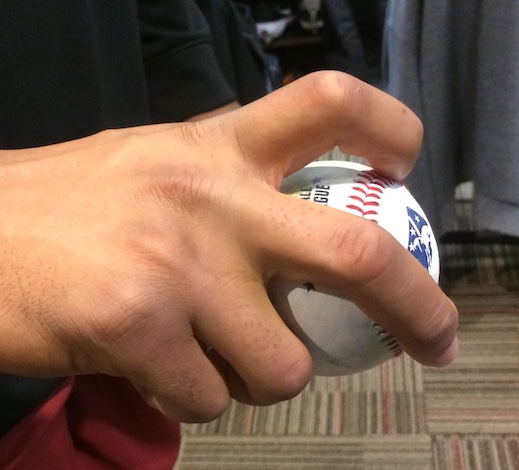Jon Duplantier, Carl Edwards Jr., and Sal Romano Contemplate Their Curveballs
Pitchers learn and develop different pitches, and they do so at varying stages of their lives. It might be a curveball in high school, a cutter in college, or a changeup in A-ball. Sometimes the addition or refinement is a natural progression — graduating from Pitching 101 to advanced course work — and often it’s a matter of necessity. In order to get hitters out as the quality of competition improves, a pitcher needs to optimize his repertoire.
In this installment of the series, we’ll hear from three pitchers — Jon Duplantier, Carl Edwards Jr., and Sal Romano — on how they learned and developed their curveballs.
——
Jon Duplantier, Arizona Diamondbacks
“I learned my curveball in college. Rice is a big breaking ball school — at least it was when I was there — and depending on where you are, you call it a different thing. It’s a spiked curveball, but I know that at Southern Miss, they call it a Rice slider. Essentially, it’s just a concept where you’re looking for this general break. You spike the curveball, with the idea being that you want something hard, with depth.

“My freshman year, I threw a slurve. The velocity on it was fine — it was 76-78 [mph] — but I would lose feel for it every now and then. When I’d lose feel for it, teams would start sitting on my heater. Read the rest of this entry »